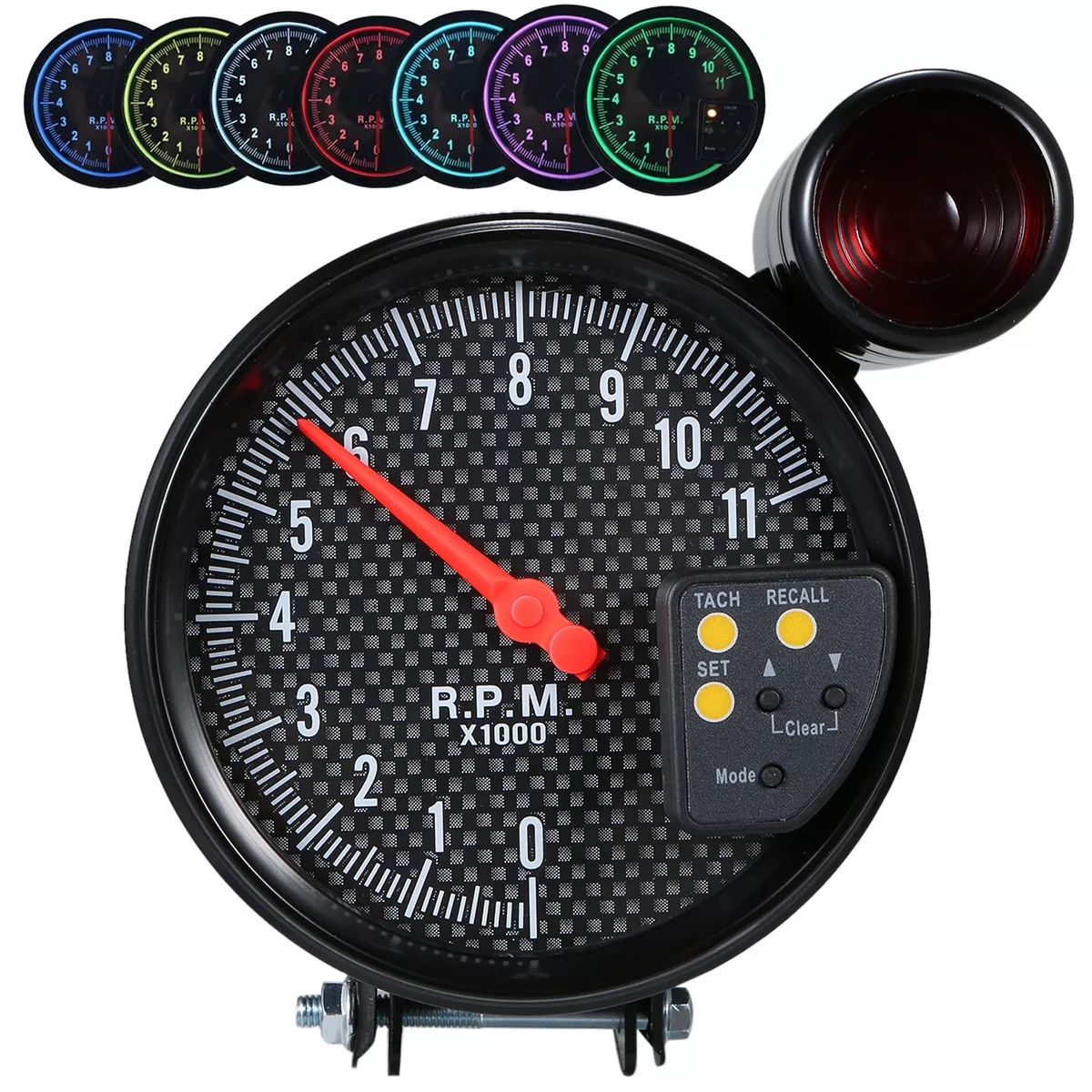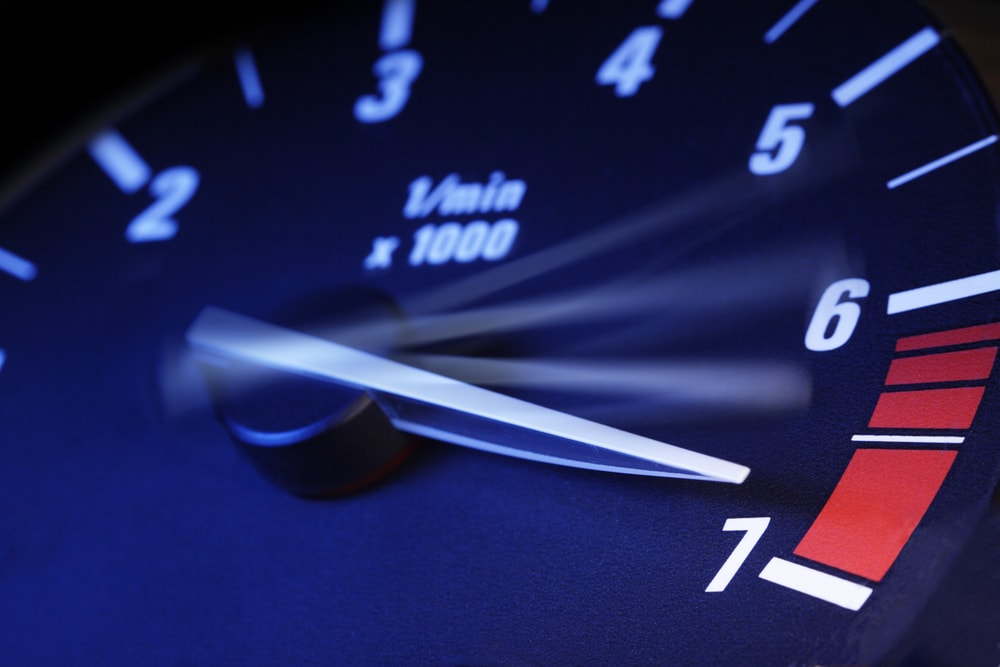Professional Tips for Maintaining and Adjusting Your Tachometer
The Value of a Tachometer in Keeping An Eye On Engine Speed and Efficiency in Automotive Applications
In the realm of auto design, the tachometer stands as a pivotal instrument in the motorist's collection, giving a direct window into the inner functions of an automobile's engine. Past its feature as a simple scale of changes per min (RPM), the tachometer offers as an essential tool for enthusiasts and specialists alike, offering real-time insights right into engine efficiency and wellness.
Importance of Monitoring Engine RPM
Checking engine RPM, or revolutions per min, is a crucial aspect of auto maintenance and efficiency examination. Engine RPM directly correlates with the rate at which the engine's crankshaft turns, showing how promptly the engine is running - tachometer. By monitoring RPM, mechanics can assess the wellness of the engine, identify possible problems, and fine-tune performance. An unusual RPM reading might indicate problems such as engine misfires, faulty ignition system, or concerns with the fuel delivery system. Continually high RPM analyses might indicate hostile driving practices or the need for a greater equipment shift to improve gas effectiveness.
Furthermore, keeping an eye on engine RPM is vital for efficiency examination in auto racing and high-performance automobiles. Maintaining ideal RPM degrees is important for achieving peak power outcome and velocity. Racers typically make use of tachometers to ensure they are running within the perfect RPM array for maximum efficiency. In recap, keeping track of engine RPM is not just vital for identifying issues however also for enhancing engine efficiency in numerous automobile applications.

Benefits of Real-Time Information
In auto applications, real-time information plays an essential function in supplying instantaneous understandings right into the efficiency and problem of the lorry. By continually monitoring various specifications such as engine speed, temperature level, gas consumption, and much more, real-time information uses numerous benefits that add to enhanced efficiency and safety when driving.
One significant advantage of real-time information is its capacity to sharp motorists and professionals to any type of anomalies or issues quickly. This proactive approach makes it possible for fast identification of prospective problems, permitting prompt interventions to avoid further damages or malfunctions. Furthermore, real-time data facilitates efficiency optimization by supplying immediate feedback on driving behaviors and engine effectiveness. Chauffeurs can readjust their actions in real-time based upon this information to achieve far better fuel economy and lengthen the life expectancy of their vehicle.

In addition, real-time data plays a crucial duty in modern-day automotive diagnostics, allowing specialists to rapidly detect and resolve malfunctions. This leads to reduced downtime, reduced upkeep costs, and ultimately, boosted overall vehicle dependability and durability (tachometer). By harnessing the click here to read power of real-time information, automobile stakeholders can make informed decisions that positively influence both the performance and long life of the lorry
Influence On Gear Shifts
Reliable equipment shifts in automobile applications dramatically affect general performance and driving experience. The tachometer plays a vital function in optimizing gear shifts by giving real-time engine speed information to the chauffeur. When approaching the redline on the tachometer, it signals the chauffeur to upshift to avoid over-revving the engine and causing prospective damage. On the other hand, downshifting at the ideal minute can help preserve the engine in its power band, making sure responsive acceleration when needed.
Additionally, the tachometer aids in accomplishing smoother gear transitions, particularly in hand-operated transmissions. By monitoring engine rate, motorists can carry out gear shifts at the optimum RPM array, lowering snagging motions and minimizing endure the transmission parts. This precision on duty adjustments not just improves driving comfort yet likewise adds to fuel performance.
Enhancing Fuel Efficiency
Offered the important function the tachometer plays in optimizing equipment changes for performance and engine wellness, it directly contributes to taking full advantage of fuel performance in vehicle applications. By offering real-time feedback on engine rate, the tachometer assists vehicle drivers in keeping the most efficient RPM variety for fuel economy. When vehicle drivers constantly keep track of the tachometer and adjust their motoring practices accordingly, they can avoid unnecessary fuel usage triggered by i was reading this over-revving or carrying the engine.
Moreover, the tachometer assists drivers determine the most fuel-efficient gear to be in at any kind of given minute, preventing the engine from functioning more difficult than essential. In final thought, the tachometer offers as a valuable device in improving gas efficiency by advertising optimum driving behaviors and identifying areas for improvement in the car's performance.

Taking Full Advantage Of Engine Durability
The tachometer's duty in checking engine rate and performance contributes in making sure the long life of auto engines. By utilizing the tachometer successfully, motorists can maximize engine long life with conscious RPM monitoring. Continually revving an engine too expensive can lead to excessive deterioration on important components, such as the pistons, shutoffs, and bearings. Gradually, this can result in decreased engine performance and prospective breakdowns. Keeping an eye on the tachometer enables motorists to remain within the recommended RPM variety for their lorry, protecting against unneeded stress on the engine and prolonging its lifespan.

Verdict
In final thought, the tachometer plays an important duty in keeping an eye on engine speed and performance in automobile applications. By supplying real-time information on RPM, it enables for efficient equipment changes, improved fuel efficiency, and maximized engine durability. This device is necessary for preserving optimal engine performance and ensuring the total performance of an automobile.